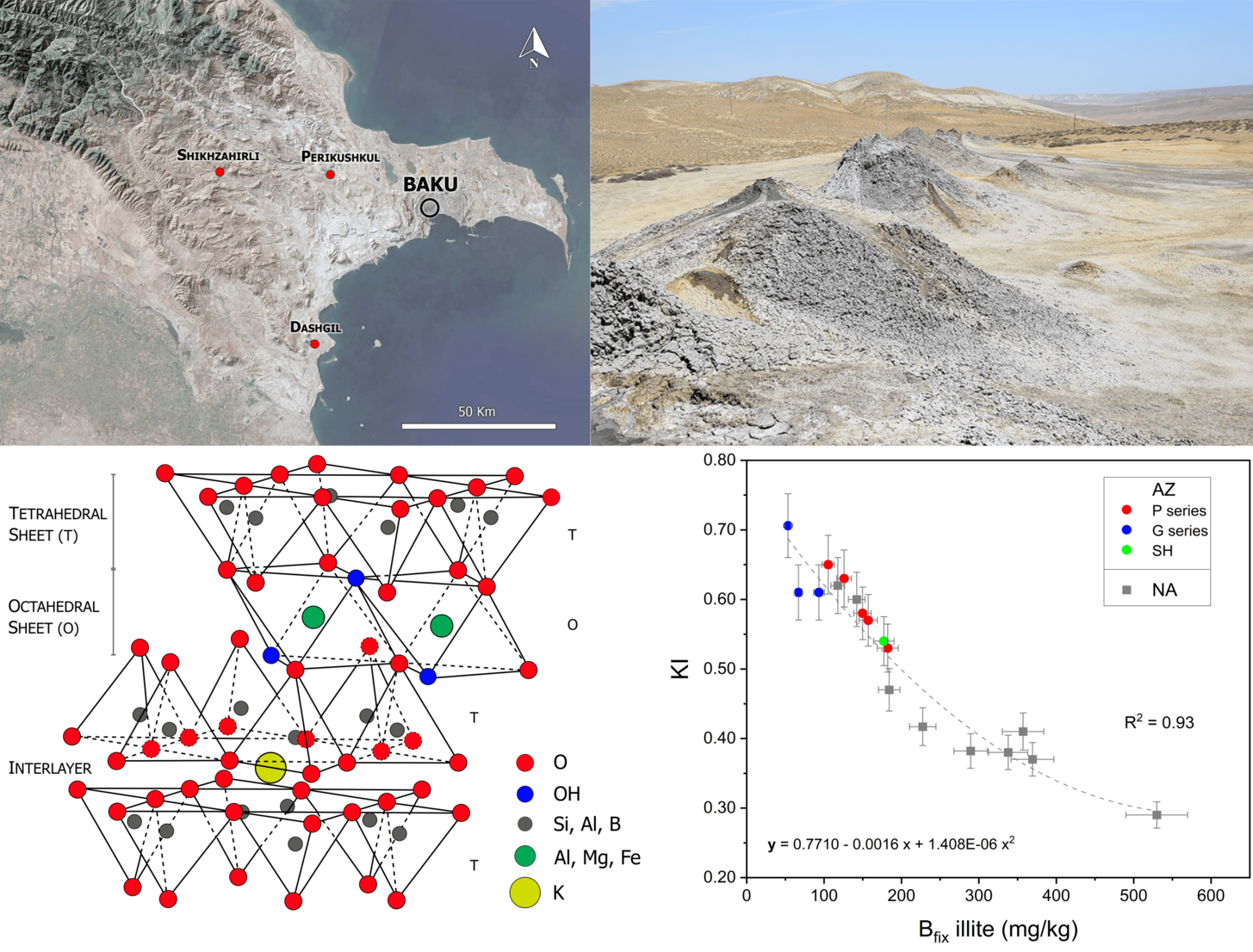New study on the mud volcanoes of the Caucasus and the Northern Apennines reveals the role of boron in the mineralogical characteristics of illite
A new study on mud volcanoes led by researchers from the Institute of Geosciences and Earth Resources has been published in the journal Clays and Clay Minerals, in collaboration with colleagues from the University of Pisa and the Institute of Geology and Geophysics of Baku State University.
The research is the result of an international collaboration among geologists, mineralogists, and geochemists, and confirms findings published in 2016 regarding emissions from mud volcanoes in the Northern Apennines (Battaglia & Pennisi, 2016).
The study focuses on both solid ("mud") and liquid (brackish waters) emissions from three active mud volcanoes in Azerbaijan—Perikushkul, Dashgil, and Shikhzahirli—sampled by IGG researchers together with Azerbaijani colleagues in 2018.
Chemical and mineralogical analyses show that boron is present in the brackish waters at concentrations exceeding 0.01%, with enrichment also observed in the sediments.
It was found that in samples from both the Apennines and Azerbaijan, illite crystallinity—measured using the Kübler index—and structural boron are correlated by the same equation.
The comparison between chemical and mineralogical data confirms that high boron concentrations may play a role in influencing the crystallographic characteristics of illite during the diagenetic smectite-to-illite transformation.
This conclusion may have implications for estimating the pressure and depth reached by sediments using illite crystallinity as a geothermometric/geobarometric tool.
Reference
Salvadori M., Battaglia S., Lezzerini M., Huseynov D., Pennisi M., 2025. Influence of structural boron on 'illite crystallinity': results from mud volcanoes in Azerbaijan. Clays and Clay Minerals. 2025;73:e19. doi:10.1017/cmn.2025.10007.
For more info: Matteo Salvadori (matteo.salvadori@cnr.it) e Maddalena Pennisi (maddalena.pennisi@cnr.it).
